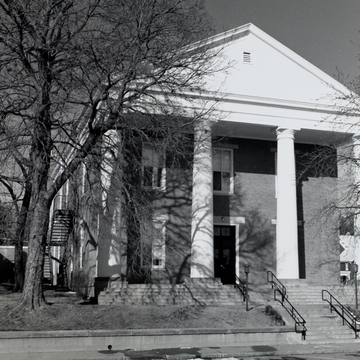The Lee County Courthouse is one of several buildings (including the first Iowa State Capitol building) that have been attributed to Father Mazzochelli. The myth that he was the architect for the Lee County Courthouse is romantic, but hard-core evidence is hardly present. The design of the courthouse is that of a quite late version of the Greek Revival temple as a public building. Four somewhat massive Tuscan columns support the entablature and pediment. The deep entablature and cornice are carried around the remaining three sides of this two-story brick structure. On the roof ridge above the front entrance was a square base upon which was an octagonal domed cupola. Interior changes were made within the courthouse in 1876, and at that time a new wing was added to the north. In 1895 additional space was added to the building to house rooms for the supervisors and judges, and for a new boiler/heating room. The building was destroyed by fire in 1911. Surprisingly there was a strong contingent in the city and community that wished simply to rebuild the building as it had existed (with some interior modifications). Since the building was insured, this in the end seemed the most sensible course of action (for both sentimental and financial reasons). What we see today then is the rebuilt (1911) structure, minus its domed cupola and the row of chimneys that projected above the roof on both sides of the building.
You are here
Lee County Courthouse
If SAH Archipedia has been useful to you, please consider supporting it.
SAH Archipedia tells the story of the United States through its buildings, landscapes, and cities. This freely available resource empowers the public with authoritative knowledge that deepens their understanding and appreciation of the built environment. But the Society of Architectural Historians, which created SAH Archipedia with University of Virginia Press, needs your support to maintain the high-caliber research, writing, photography, cartography, editing, design, and programming that make SAH Archipedia a trusted online resource available to all who value the history of place, heritage tourism, and learning.

